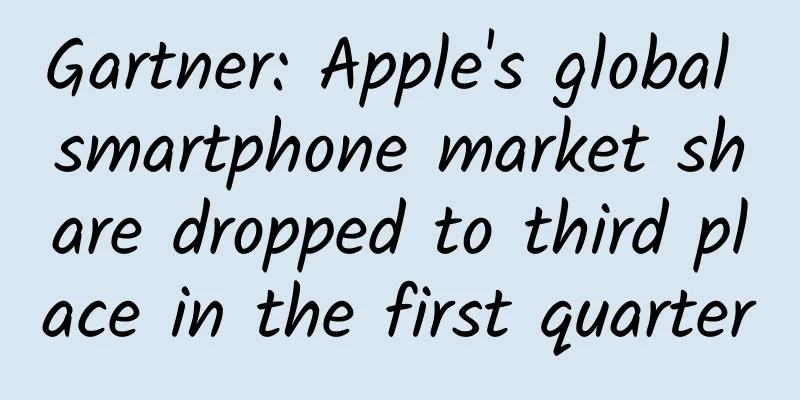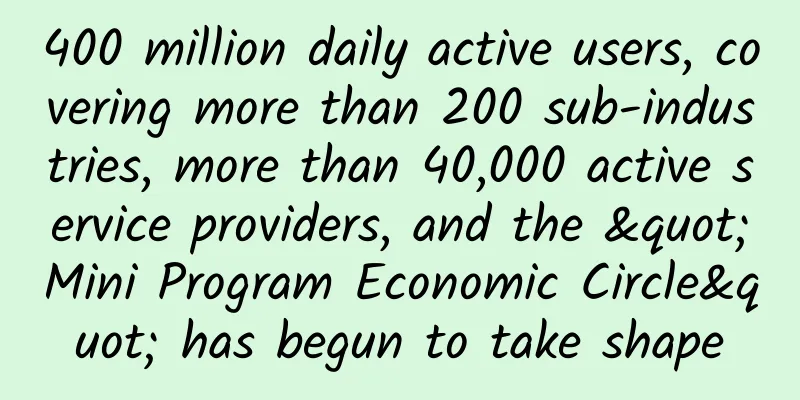Ma Huateng vs. Jack Ma: After WeChat defeated Sina Weibo, is it going to dethrone Alipay?

|
On the 10th, Chinese Internet company Tencent released its latest financial status. What is eye-catching is not only the company's financial data, but also Tencent's popular mobile application WeChat: now 200 million users have linked their bank cards through WeChat. WeChat and WeChat have a total of 650 million monthly active users, while Tencent's QQ, an instant messaging service that originated on desktop terminals, has 639 million mobile users. Meanwhile, Tencent's QQ Wallet and WeChat Pay have seen astonishing growth in the number of users, and a crisis is looming for its competitor, Alibaba's mobile payment app Alipay. Alipay is popular thanks to Alibaba's vast e-commerce network; but for users and operators, QQ Wallet and WeChat Pay, which are attached to messaging applications for people's daily interactions, are more convenient. From the development history of WeChat, WeChat, which was launched in 2010, has expanded rapidly over the past few years and has surpassed Sina Weibo, which once led the social trend in China, in terms of user stickiness. Now, with the launch of WeChat Pay and its increasing number of users, Jack Ma's Alipay may no longer be able to sit on the Diaoyutai. How did WeChat surpass Sina Weibo? Note: The picture comes from Tencent Technology In July 2009, Sina's management decided to develop a microblog product. In early 2010, Sina Weibo launched an API open platform. Once launched, it was unprecedentedly popular. According to official data released in 2010, Sina Weibo posts more than 25 million posts per day, of which 38% are from mobile terminals. The number of microblogs posted every day exceeds 25 million, and the total number of microblogs exceeds 2 billion. It is the most influential and most watched microblog operator in China. On April 29, 2013, Alibaba invested US$586 million in Sina Weibo, accounting for about 18% of its total shares. This also led to Weibo, which was supposed to develop social e-commerce in the future, gradually becoming a traffic diversion tool for Taobao. At 9:30 pm on March 17, 2014, Sina Weibo officially landed on NASDAQ. In October 2015, there were rumors that Alibaba would acquire Sina Weibo. However, after several years of development, with the emergence of smartphones, Sina Weibo has gradually lost its stickiness among users. According to the Reuters Institute for the Study of Journalism, smartphone users spend half of their device usage time reading news. Therefore, more and more users are beginning to use search engines and social media to find news instead of visiting the homepages of news websites. It is regrettable that Weibo, which has the support of Sina portal, has not yet developed a sufficiently powerful news client product on the mobile terminal. Sina did not say that it had made some efforts. For example, Weibo once launched an independent client Weibo Toutiao, planning to completely copy Toutiao, but it is now basically in a state of abortion. Elite big Vs who can continuously produce high-quality content are now increasingly afraid to speak out, and joke makers and marketing accounts are producing high-quality content by plagiarizing users to hype up and achieve commercial value. The top few places in the "hot microblog" rankings previously launched by Weibo have even been occupied by major marketing companies for a long time, and the number of reposts and comments is all generated by machines. A series of major events may have proved that Weibo's influence is still unmatched, and the user activity rate has not dropped significantly, but more and more users feel that Weibo is becoming less and less interesting. The content produced cannot be noticed by others, and users cannot find content accounts that they are interested in. This kind of social graph recommendation based entirely on user relationship chains is obviously outdated. For Weibo, it is now necessary to mine and recommend content to users at the product level. Weibo does not lack people who can produce high-quality content. What it lacks is a mechanism for how the high-quality content produced can be discovered by ordinary users.
On the other hand, WeChat was created by Tencent in early 2011. People are using WeChat more and more frequently because of its convenience and strong demand for voice communication with friends. With the launch of WeChat's "Friends Circle", people are also getting used to using "Friends Circle" to publish various contents related to themselves. One piece of content is published on Weibo and WeChat at the same time. Since WeChat is used more frequently, it is faster and more convenient to get the status information of friends around and the interaction around these contents than Weibo. Therefore, people will naturally transfer the content originally published on Weibo to WeChat Friends Circle. The activity of users on Weibo who are more concerned about daily social interaction has also shifted from Weibo to WeChat. The launch of WeChat public platform enables users to obtain more detailed and original information on WeChat than Weibo. Data shows that 55.2% of users open WeChat more than 10 times a day, and 25% of users open it more than 30 times a day. For more and more people, WeChat has become the beginning of the day, the company of the day, and the end of the day. WeChat has opened a trend, with an average of 570 million logged-in users per day, and a penetration rate of 93% in first-tier cities. It can be said that WeChat is surrounded by everything you see and where you are. Enjoy the convenience of food, clothing, housing and transportation, share the surge of joy, anger, sorrow and happiness, have anytime and anywhere interaction, and relieve boredom... "WeChat is a lifestyle" has been clearly presented in the life world of countless users. In this regard, some people are willing to "drunk" in it, and some people are irresistibly "wrapped" in it. There is a trend of "either evolving in WeChat or falling behind outside WeChat." Today, WeChat has 650 million monthly active users, far surpassing Sina Weibo, which has only 198 million monthly active users. Although the two sides are still "fighting", WeChat, which is closer to users' daily lives, is bound to lead in user stickiness. After WeChat dethroned Sina Weibo from the top spot in social networking, it was time for a head-on confrontation with Alipay in the payment field. Ma Huateng tried to dethrone Alipay in the payment field by relying on the powerful social functions of WeChat. WeChat Pay and Alipay's "fight"
On August 5, 2013, with the launch of WeChat 5.0, WeChat Pay was officially launched. Compared with Alipay, which was launched in 2003, it was much later. However, WeChat was connected to many companies such as Dangdang, Yixun, and Youku in its early days. Alipay was not far behind and joined Intime to launch face-to-face payment. The two companies continued to seize offline resources and accelerate cooperation with offline department stores. Currently, more than 70 brands including Carrefour, Walmart, 7-11, etc. have been connected to Alipay, and the total number of offline stores connected to WeChat Pay has exceeded 150,000, which can be said to be evenly matched. In 2015, both parties stepped up their spending to gain market share. In August, both Alipay and WeChat Pay launched cashless discount activities. WeChat Pay launched "Cashless Day" on August 8, and Alipay set the entire August as Cashless Month. In December 2013, Wanda Cinemas and Jinyi Cinemas entered the Alipay Wallet public service platform and launched a new function of offline self-service machine sound wave ticket purchase. The day before Wanda and Alipay cooperated, WeChat also launched a movie ticket purchase service. As of June 2014, WeChat has cooperated with more than 2,000 cinemas. In December 2013, Alipay and Kuaidi Taxi promoted mobile payment functions in the taxi market. In January of the following year, Didi Taxi and WeChat Pay announced their cooperation. On June 18, 2015, Didi Kuaidi connected the two platforms and was compatible with Alipay and WeChat Pay. In June 2015, Alipay and WeChat reached strategic cooperation with Hongqiao Airport and Pudong Airport respectively, allowing users to check flight information, check in and even claim flight delay insurance on their mobile phones. On August 12, WeChat launched a WeChat payment promotion at the Capital Airport. Industry insiders speculated that it might be imitating Alipay's behavior of distributing red envelopes at major transportation hubs across the country during the Spring Festival. During the 2014 Spring Festival, Alipay launched the "Send Red Packets" and "Ask for Good Luck" functions. On January 26, WeChat launched the "New Year Red Packets" function for public accounts, but the response was clearly better for WeChat. On February 2, 2015, Alipay and Sina Weibo launched the Weibo payment function, sending out 100 million yuan in cash red packets on New Year's Eve; WeChat also took part in the Spring Festival Gala. According to statistics, the total number of WeChat shake interactions during the CCTV Spring Festival Gala reached 110 times. Moreover, the struggle between the two sides seems to be particularly fierce this year. On the afternoon of February 4, Alipay added a sharing entrance for payment red packets on WeChat and QQ, but just a few hours later, this function was blocked by WeChat. In May 2014, Alipay launched the "Future Hospital Plan", which allows users to register, pay and query information online. As of early May 2015, six tertiary hospitals have started this cooperation with Alipay. Alipay expects that by the end of this year, the number of medical institutions joining the "Future Hospital" nationwide will exceed 100. Around May 2015, "Beijing Medical Communication", jointly initiated by the Beijing Municipal Health and Family Planning Commission, Beijing Municipal Hospital Management Bureau and Bank of Beijing, launched a WeChat service account, officially connected to the WeChat smart medical system and first piloted in Beijing Century Altar Hospital, which also supports the payment of registration fees, test fees and medical expenses. The fashion industry is still a new world for Alipay and WeChat, but it is not far from being conquered. In June, WeChat Pay signed a contract with Hong Kong Sasa, a cosmetics and health product retailer, but only two months later, news came that Sasa "transferred" its love to Alipay and implemented Alipay payment in more than 100 stores in Hong Kong. WeChat is working hard and recently reached a cooperation with the fast fashion brand Hotwind, but Alipay had already won over Metersbonwe in 2013 and implemented "face-to-face payment" in stores. The next step may be that more fashion chain brands will join in. Is Ma Huateng going to dethrone Alipay?
According to public data, as of April this year, the number of active users of Alipay wallets has exceeded 270 million, accounting for more than 80% of the market share in the mobile payment market at that time. Currently, 200 million users have bound their bank cards through WeChat. It can be foreseen that with the access of wallets, cinemas, e-commerce, tourism, medical care and other fields, WeChat payment, which is connected to social scenes, will pose a great threat to Alipay in terms of convenience. Of course, the two may develop their own development in different fields, Alipay is attached to business, and WeChat payment is attached to daily life. But judging from the fact that the two sides have already started a war of words, both sides have plans to access each other's fields. Under the premise of only one smart device, whoever is closer to life will have a huge advantage. |
Recommend
Long March 5B rocket: The unique skills of the "big guy"
At 14:22 on July 24, the Long March 5B carrier ro...
Do you have the same stutter as Shen Gongbao? The doctor teaches you how to speak smoothly from "stuttering"
The domestic animated film "Nezha: The Devil...
How much does it cost to fake orders on Douyin? How to increase orders in Douyin store?
This article mainly introduces how much money it ...
As Samsung declines, has China Cool Alliance risen accordingly?
Currently, Samsung is facing a downturn in the Ch...
A comprehensive analysis of Swift 2 error handling techniques
Error handling has been supported since Swift 1; ...
"SEO Training Academy" Urumqi SEO shares how to increase SEO daily traffic from 0 to 10,000+
Nonsense: Time flies. I have been working in SEO ...
Technology News丨FAST has discovered 509 pulsars; TEPCO officially submits application for nuclear wastewater discharge into the sea
Today's cover In winter, the snow around Qing...
When does school start in Shanxi in 2020? When will the school start be postponed? The latest notification is here!
Due to the impact of the epidemic, many schools w...
Case analysis: Uncovering the growth model of Zebra AI class’s 0-yuan traffic diversion course
Zebra AI Class is an intelligent education platfo...
Five things you need to know about TEE
The Android phones we usually refer to are not on...
How to play and case analysis of limited-time flash sales in the community
Limited-time flash sales are a marketing applicat...
Understand the 4 principles of Zhihu community operation in one article!
In August 2010, Zhihu founder and CEO Zhou Yuan, ...
[Inspirational story] Don’t be afraid of falling and never give up
[Inspirational Story] Don't be afraid of falli...
How to determine whether you are calcium deficient? Know these points, calcium supplements are not wasted
Expert of this article: Li Xue, Peking Union Medi...
How can APP improve its display download conversion rate in AppStore?
In the process of ASO , if the conversion rate of...









